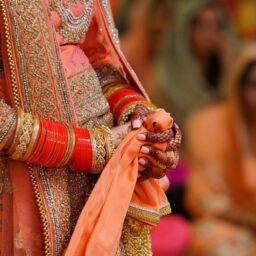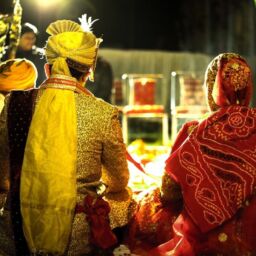INTRODUCTION
The origin of the Special Marriage Act[1] can be traced back to the Secular Marriage law which was introduced by Sir Henry Maine in 1872. The act allowed Indian citizens to marry under secular law, thus sidestepping the personal laws. The act passed in 1954 was a modified version of a law parallel to the former that was followed. The 1872 act was antagonized by orthodox elements and thus it got limited to those who were willing to give up their religion to marry. However, ultimately with time and efforts of a progressive section of people, the law in the present form came into being.[2]
As per the Statement of Objects and Reasons the act was introduced in order “to provide a special form of marriage which can be taken advantage of by any person in India and all Indian nationals in foreign countries irrespective of the faith which either party to the marriage may profess.”[3]
Thereby it was supposed to introduce a passage for inter-faith couples to get married without having to leave their own faith under personal laws. However, ironically some of its provisions make the couples turn to the more convenient path of conversion, which itself has become tumultuous given various states laws discouraging it in the recent past, thus rendering the objective effectively unviable. This has brought the utility of the act into question with several commentators urging the act to be purged of its regressive & outdated provisions and be made more relevant and meaningful.
NON-INCLUSIVE NATURE OF INDIAN LAW
Section 4 of the act describes the parties as male and female, thus completely disregarding the rights of non-binary persons to get married who may not find acceptance under personal laws. This not only points towards the discriminatory marginalization as a consequence of the act but also puts the spotlight on the secular credentials of the act.
Recently, a same-sex couple has filed a petition[4] in Kerala High Court against the unconstitutionality of this section since its exclusionary nature curtails the rights of such couples to legally get married coming in way of expressing their sexual identity being part of the right to privacy[5] as clarified by the Supreme Court. An inclusionary vision would be legal recognition of a relationship notwithstanding their gender identity or sex respecting the decision of two consenting adults.
DISCRIMINATORY TENDENCIES IN VARIOUS LEGISLATIONS
Section 5 requires at least one of the parties to have resided in the district for a period of not less than 30 days immediately preceding the date on which notice is given to the Marriage Officer of the district. Given the context in which most inter-faith marriages happen in our country, the 30 days’ period not only makes the couple vulnerable to violent threats from the family members but can even ultimately be life-threatening. The couple intending to get married under various personal laws such as the Hindu Marriage Act 1955[6] aren’t required to submit any such application. This contradictory provision strikes at the root of Article 14 which prohibits the state from denying any person equality before laws or equal protection of laws.
The application of different laws for different religions doesn’t satisfy any intelligible differentia as is required under the condition for being an exception to Article 14. It even violates Article 15 which bars the state from practising discrimination only on grounds of religion, race, caste, sex, place of birth. This provision should be annulled so that the parties don’t get harassed. Due to repeated complaints of harassment by the couples, several courts[7] had to step in, denying the need to publish such details on websites and in newspapers. It is expected that the law could specifically exclude such unnecessarily painful requirements.
THE ABUSE OF RIGHT TO LIFE AND PRIVACY
Section 6 requires the Marriage Officer to make copies of all notices which are open for inspection at all times without a fee by any person who seems desirous of inspecting the same. They’re also required to publish every notice by affixing a copy at the office board inviting objections regarding it if any under Section 7. In response to a plea filed by an inter-faith couple in Delhi High Court[8], the state mentioned that “If any person objects to the said marriage (under SMA) within a period of 30 days, the marriage officer shall not solemnize the marriage until he enquires into the matter of objection. It may not be possible to verify the credibility of such a person if at least thirty days’ period is not given as mentioned in section 7 of the Act,” Thus, the supposed rationale for this is that the marriage could be prevented from happening if it violates the necessary criteria such as minimum age or bigamy. No matter how noble the intention, it needs to be ca(u)lled out since it discriminates against interfaith couples since there is an absence of such requirement in various personal marriage laws.
If either of the interested parties isn’t a permanent resident in the district where notice has been given, then the Marriage Officer has to send the notice to the Marriage Officer of the district where they’re so, who then has to publicize it. Putting out private details of the couple in the public domain goes against their fundamental right to privacy under Article 21 enshrined under Puttaswamy judgement[9]. This provision gives leeway to fringe elements to moral police the couple since anyone is allowed to inspect the notice.
The act of publicizing the notice in the district could endanger the lives of the vulnerable couples, given the kind of unacceptability these marriages are prone to. This is imperative especially in the context of a legal lacuna about honour killings both in respect to inter-caste and inter-faith couples. This can also be used to further communal propaganda in effect poisoning the potential marital life of the couple even before it begins. It involves unnecessary parental and societal interference which in effect goes against the right to marry a person of choice under Article 21 recognized in the Hadiya case.[10]
CONCLUSION AND THE WAY AHEAD
Given the growing communalization of the institution of marriage, the law needs to provide for sensitization measures for personnel who are entrusted with implementing the various provisions so that they refrain from appropriating the role of paternalistic marriage counsellors knowing better than the couple and should focus on completing their duties as reasonably neutral individuals. This could reduce the practical problems that the couples face to a large extent. Given the inconsistencies pointed out in the act and several petitions filed against its obsolete as well as prejudiced tendencies, the time is ripe for the Legislature to have a relook on the legislation and make necessary changes.
Author(s) Name: Rupal Nayal (National Law University, Delhi)
References:
[1] The Special Marriage Act, 1954 Act No. 43 Of 1954
[2] Shubham, S, (How the Provisions of The Civil Marriage Law Are Failing Interfaith Couples, 2021) Feminism in India <https://feminisminindia.com/2021/03/15/civil-marriage-laws-india-failing-interfaith-couples/> [Accessed 7 September 2021].
[3] Goolrokh Gupta v. Burjor Pardiwala SLP(C) 18889/2012
[4] NETWORK, L. (Gay Couple Moves Kerala HC for Recognition of Homosexual Marriages under Special Marriage Act [Read Petition], 2021) Livelaw <https://www.livelaw.in/news-updates/gay-couple moves-kerala-hc-for-recognition-of-homosexual-marriages-under-special-marriage-act-152046> [Accessed 7 September 2021].
[5] Justice K. S. Puttaswamy (Retd.) v. Union Of India, (2017) 10 SCC 1
[6] The Hindu Marriage Act, 1955 (Act No. Xxv of 1955).
[7] Smt.Safiya Sultana Thru. Husband v. State Of U.P. Thru. Secy. Home, AIR 2021 All 56
[8] Nida Rehman & Anr Vs State Of Nct & Ors. W.P. (C) 6947/2020.
[9] Supra 5.
[10] Shafin Jahan v. Asokan K.M., AIR 2018 SC 1933.
















